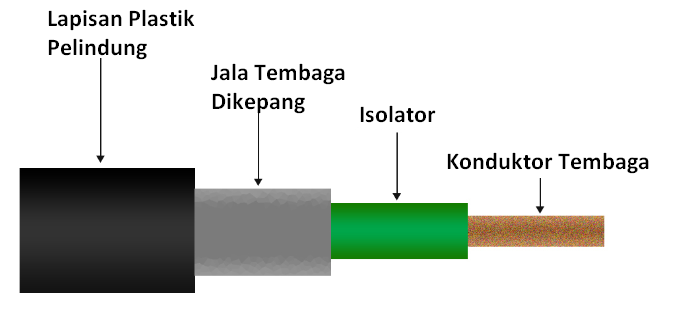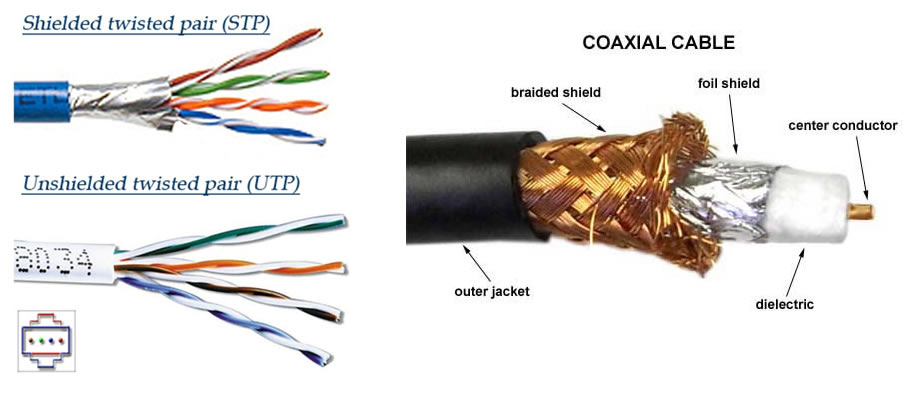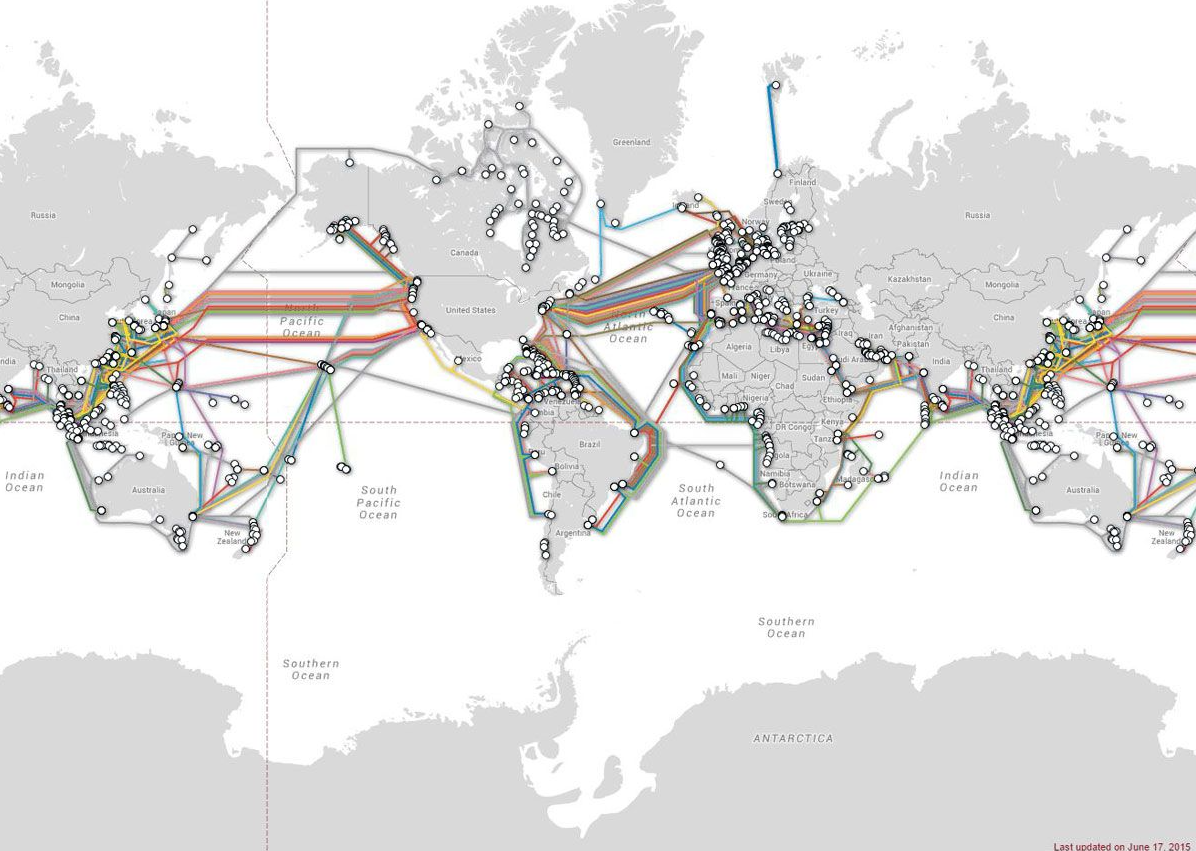In a computer network, of course, even though it is now completely wireless, there are still some parts that are connected to each other using cables. The cables on the network that you often encounter are coaxial cables and fiber optic cables. Maybe if you see there is a difference between the two.
Before reading further, for those of you who want to know more about Netdata, you can contact us directly via the link below.
Yes, indeed these two types of cables have different meanings and also different functions. What are the differences and what are the functions of each? Is it same? Let’s see!
Table of Contents
Explanation of Coaxial Cable
First, let’s discuss coaxial cable first. Coaxial cable is an electrical cable with a copper conductor and an insulator shield around it and a braided metal mesh that prevents signal interference and cross talk. Coaxial cable is also known as coax.
Core copper conductors are used for signal transmission and insulators are used to provide insulation to the copper conductors and insulators are surrounded by braided metal conductors which helps prevent electrical signal interference and prevents cross talk. The entire setup is once again covered with a protective plastic layer to provide extra security to the cables.
Part of the Coaxial Cable
If you get a coaxial cable, it comes in multiple layers.

- Copper conductor: A central conductor, consisting of copper. The conductor is the point where data transmits.
- Insulator: Dielectric plastic insulation around copper conductors. it is used to maintain the distance between the center conductor and the shield.
- Braided copper mesh: Braided copper mesh helps shield against electromagnetic interference, The mesh provides a barrier to EMI moving in and out of the coaxial cable.
- Protective plastic layer: External polymer layer, which has a plastic coating. It is used to protect the internal lining from damage.
Coaxial Cable Function
If you are wondering what the actual function of this coaxial cable is in a computer network, maybe you will understand if you have seen this cable. Have you ever put a cable on the television that leads to the antenna? Yes, it’s a coaxial cable.
So, the function of the coaxial cable itself is very important for television and radio, obviously for audio and visual needs. This type of cable is usually used as a transmission line and can transmit high frequency signals with low errors.
Coaxial cable type
Coaxial cable itself consists of various types. Several types are applied to different situations and conditions. In essence, it depends on its use. Mainly, coaxial cable consists of 4 types, including:
Hard-Line
The first is a coaxial cable with a hard-line type. These cables use a center conductor made of materials such as copper, silver, aluminum, or steel and this type of cable is usually larger in diameter than other forms of coaxial cable. This type of cable can be used in high strength signal transmission.
Trixial Cable
Next is the trixial cable. Trixial cable coaxial cable has an additional copper braid. This wire acts as a shield and is grounded, allowing ground loop currents or capacitive field noise away from the inner core conductive elements. Trixial cable provides increased bandwidth and interference rejection, offers an increased signal-to-noise ratio over standard coaxial cable, and reduces cable loss and cable loading.
Rigid-Line
Coaxial cable of the rigid-line type consists of two concentrically mounted copper tubes supported at fixed intervals along the length of the cable using PTFE (Polytetrafluoroethylene) supports or disk insulators. Although it is called rigid coaxial cable, the term rigid coaxial transmission line is probably a more appropriate moniker given that cable has traditionally been imagined as flexible or bendable.
Radiating Cable
The last one is the type of radiating cable. It serves as a long, flexible antenna transmitter with slots for transmitting RF signals that can be installed around corners, along monorail systems and through tunnels to propagate wireless data signals in situations that are difficult or impossible for traditional antennas.
Advantages of Coaxial Cable
Ask about the advantages, judging from the function, you may already know what are the advantages of this type of cable. Even though this type of cable is a cable that has been around for a long time, maybe in the early 20th century, it is still used and is still a cable with many single advantages for reliable and accurate transmission.
The key to why coaxial cable excels is its shielded design, which allows the cable’s copper core to transmit data quickly, without experiencing interference or damage from environmental factors.
Description of Fiber Optic Cable
Next is to discuss FO or fiber optic cables, which of course many know about this cable. Do you think if the internet is completely wireless? Do you know that there is a distribution of fiber optic cables that connect one country to another, even one continent to another?
How is it different from the fiber optic cable that connects your home or office to the internet? Of course is the protective part. Because it’s impossible for a cable like that with makeshift protection because there are lots of threats under the sea, for example being eaten by sea animals or other things.
What is fiber optic cable? It is a cable with optics about the diameter of a human hair and when coupled to a fiber-optic cable, they are able to transmit more data over greater distances and faster than any other medium. It is this technology that provides homes and businesses with fiber-optic internet, telephone and TV services.
Fiber Optic Function
The fiber optic cables that help us in our everyday computing tasks consist of one or more strands of glass, each slightly thicker than a human hair. At the center of each strand is the core, which provides a pathway for light to travel. This core is then surrounded by a layer of glass called cladding, which reflects light inward to allow light to pass through bends in the cable and avoid signal loss.
The most significant feature of fiber optic cables is how they are made and how they function in a new way than copper cables. It is this unique use of glass and light that makes fiber-optic cables useful in today’s world of high-speed internet.
Advantages of Fiber Optic Cables
Due to its construction, fiber optic cable offers several distinct advantages over long distance copper cable. These advantages include:
- The network bandwidth that fiber cables can carry can easily exceed that of copper cables of the same thickness. Fiber cables are often rated at 10 Gbps, 40 Gbps, and 100 Gbps.
- Signals on fiber can travel longer distances without the need for signal amplification. Signals weaken at a distance of about 40 miles for single-mode cable, and about 503 meters for multimode cable.
- Fiber optic cables are less susceptible to interference, whereas copper network cables require shielding to protect them from electromagnetic interference. While this shielding can help, it is not sufficient to prevent interference in situations where multiple cables are strung in close proximity to each other. The physical properties of fiber optic cables can make it easy to avoid most of these problems.
How Fiber Optic Works
It is clear that this cable is very useful for helping us in everyday computing tasks consisting of one or more strands of glass, each slightly thicker than a strand of human hair. At the center of each strand is the core, which provides a pathway for light to travel.
Then, this core is then surrounded by a layer of glass called cladding, which reflects light inward to allow light to pass through bends in the cable and avoid signal loss.
Difference between Coaxial Cable and Fiber Optic
What is the difference between coaxial cable and fiber optic? The following is a table of the differences.
| Fiber Optic Cable | Coaxial cable |
| Fiber optic cables use light to transport data and messages. | Coaxial cable uses electrical impulses to transfer data and communication. |
| This cable is made of plastic and glass | Plastic and copper wires are used to make coaxial cables. |
| Fiber optic cable is very efficient, with little signal loss. | Coaxial cable is inexpensive, and so is installation. |
| Fiber optic cable is famous for being expensive, and the installation is also expensive | Coaxial cable is inexpensive, and so is installation. |
| This cable is very light because the material is light too | When compared to fiber optic cable, coaxial cable is very large and strong |
NetData is a company that provides the highest quality technology-based services, if you are interested in us you can contact us directly via this link or via our contact form here.
![]()



